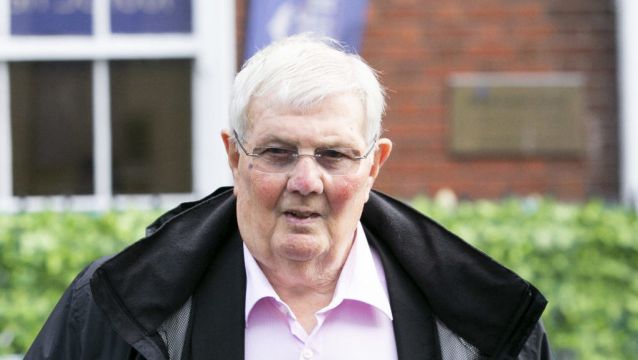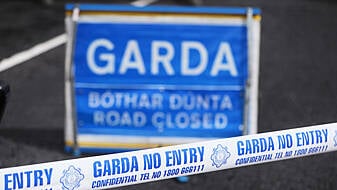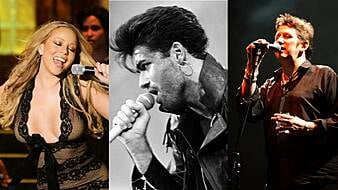Stardust manager Eamon Butterly has agreed with a barrister acting on behalf of families of those who lost their lives in the 1981 fire that three of the exits in the nightclub can be considered “a fail”.
Mr Butterly was giving evidence at the Dublin District Coroner’s Court on Friday at the inquest into the blaze that killed 48 people when it swept through the Stardust nightclub in the early hours of February 14th, 1981.
Michael O’Higgins SC asked Mr Butterly about the practice in the Stardust of wrapping chains around the panic bars on exit doors to give the impression the doors were locked.
He said that Mr Butterly had told Gardaí: “This practice originated from the doormen themselves.”
“Doormen say this was effective as it gave the impression that the doors were locked together and thereby prevented or discouraged persons inside from opening such exits,” Mr Butterly told Gardaí, going on to say that this was only in operation two to three weeks before the fire.
“You told gardaí that you couldn’t comment on how effective or otherwise it was,” Mr O’Higgins said.
“They would open,” Mr Butterly replied.
“Did you ever do it?” Mr O’Higgins asked.
“I could have, I don’t recall, no. The doormen had experience of this,” Mr Butterly said.
Mr O’Higgins asked the witness if, as a matter of common sense, there should have been a system in place whereby in the event of a fire the lights would come up, the music would go off and people were to leave the premises immediately.
“Oh yes, if it was now, it would be a completely different situation. Then, there was nothing about that type of thing. At the time, we weren’t given any regulations about that, I wouldn’t know what to do,” Mr Butterly said.
Mr O’Higgins replied that there were lots of laws in place directing what to do, some going back to 1967.
“I didn’t know about them, neither did my father or anyone else, and he was the licence holder,” Mr Butterly replied, going on to say: “I was panicking as well.”
“I fully accept you hadn’t the remotest idea what you were doing,” Mr O’Higgins said.
“I didn’t say that,” Mr Butterly said.
Main entrance
Mr O’Higgins next put to Mr Butterly the accounts of witnesses who went through exit two on the night of the fire, which was the main entrance. He said that a witness had said that doorman Frankie Downes held the outer door open for a few seconds and the crowd started to come out, then both doors swung closed.
Mr O’Higgins said that other witnesses had said there was no movement at exit two for a few minutes. He said that one witness said the front door was closed and the doorknob was on the ground, and someone else said there were around 60 people trapped in the doorway and there was sheer panic, and after five minutes the door burst open and he got out.
Mr O’Higgins said that this was a snapshot of what it was like for people getting out of exit two, and Mr Butterly agreed with him that this was “completely chaotic”.
“Can we chalk exit number two down as a fail?” Mr O’Higgins asked.
“You could chalk it down,” Mr Butterly said.
Mr O’Higgins next put to Mr Butterly the evidence of witnesses at exit three on the night. Mr O’Higgins said that witnesses said the door wouldn’t open, and people had to kick it several times. He said that one witness said he tried to pull the chain off the exit door but couldn’t, and other witnesses spoke about a van parked outside, blocking them from getting out.
“It seems pretty certain that the door wouldn’t open without force,” Mr O’Higgins said.
“That’s what it looks like,” Mr Butterly said.
Mr O’Higgins asked: “Can we chalk up number three as a fail as well?”
“Yes,” Mr Butterly replied.
Mr O’Higgins said that 271 people exited through exit two, 47 through exit three, 104 through exit four, and 145 through exit five. Mr O’Higgins said that a witness at exit four saw 15 people around the door and “fellas going mad, punching and kicking the door”.
The witness tried to force the bar up and it wouldn’t open, and he saw a padlock and chains. Another witness said the door only opened a few inches because it was held by a chain and padlock, and another witness said there was a chain wrapped around the bars of the door. Mr O’Higgins said that a number of people commented that only one leaf of the door was open.
“Can we chalk that up as another fail?” Mr O’Higgins asked.
“We can, yeah,” Mr Butterly said.
Mr O’Higgins said that a witness at exit five said they saw a bouncer kicking a big padlock off the door and it took him about three minutes. Another witness said they saw a bouncer trying to open the door by pulling the bar and kicking it, but it did not open.
Eventually the bouncer opened the door and people got out. Mr O'Higgins said that some witnesses had said they saw skips full of bottles outside the door.
“Can we chalk up five as another failure?” asked Mr O’Higgins.
“I don’t think so,” Mr Butterly said.
'Under the bus'
Earlier in the day, Mr Butterly denied an assertion by Mr O’Higgins that he was trying to throw the now deceased head doorman Tom Kennan “under the bus” by telling the jury that Mr Kennan locked exit doors in the nightclub on his own initiative.
Mr O’Higgins had asked Mr Butterly if he remembered giving evidence the day before about three of the Stardust exits usually being opened around 10pm while the rest were unlocked two hours later. Mr O’Higgins said that Mr Butterly had replied to this: “Yes, that’s what Tom Kennan told me.”
“You were asked how this policy was in place, and you said: ‘It wasn’t a policy, it was something Tom Kennan told me he was doing. I told him that the doors shouldn’t be locked. I never saw the doors locked’,” Mr O’Higgins said.
"From reading that, my impression is that this was something Tom Kennan was doing on his own initiative,” Mr O’Higgins said.
"He was in charge,” Mr Butterly said.
“If what you’re saying isn’t true, you are attacking him in your evidence here, because you’re putting the blame on him, and he’s dead,” said Mr O’Higgins, going on to ask: “You wouldn’t be throwing Tom under the bus here?”
“I would not, no,” Mr Butterly replied.
Mr Butterly’s evidence continues next Tuesday in the Pillar Room of the Rotunda Hospital.







